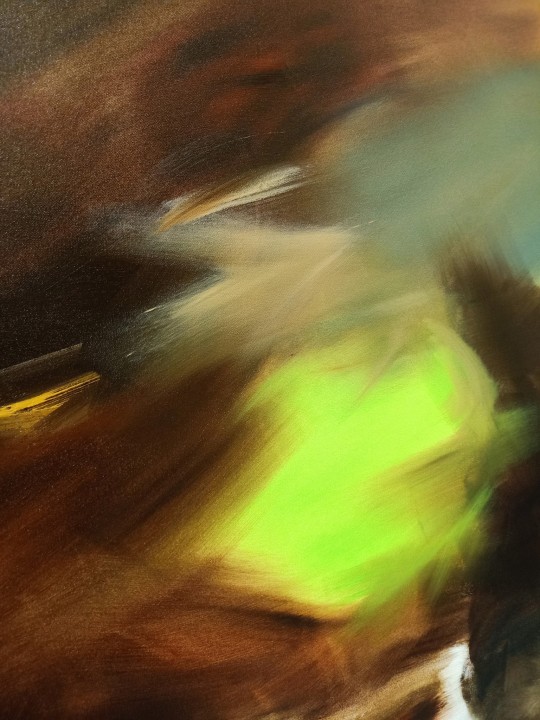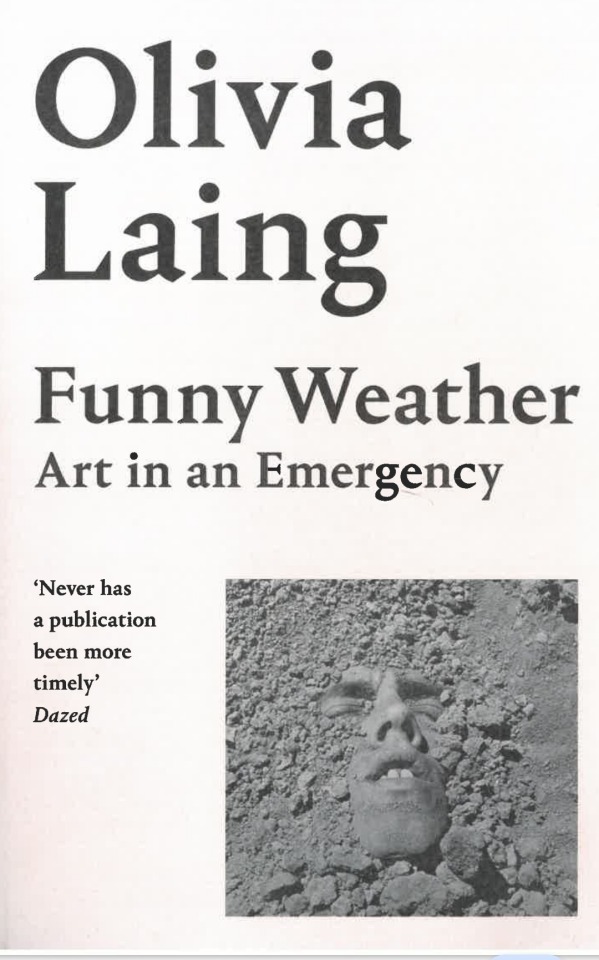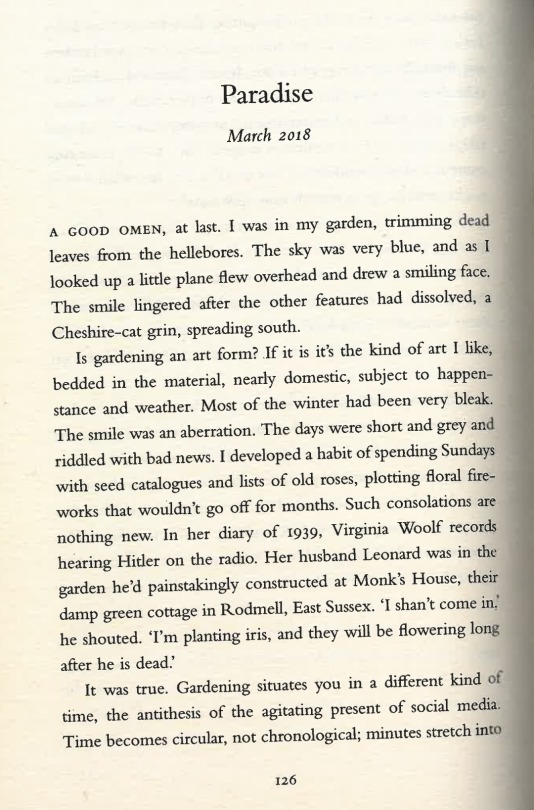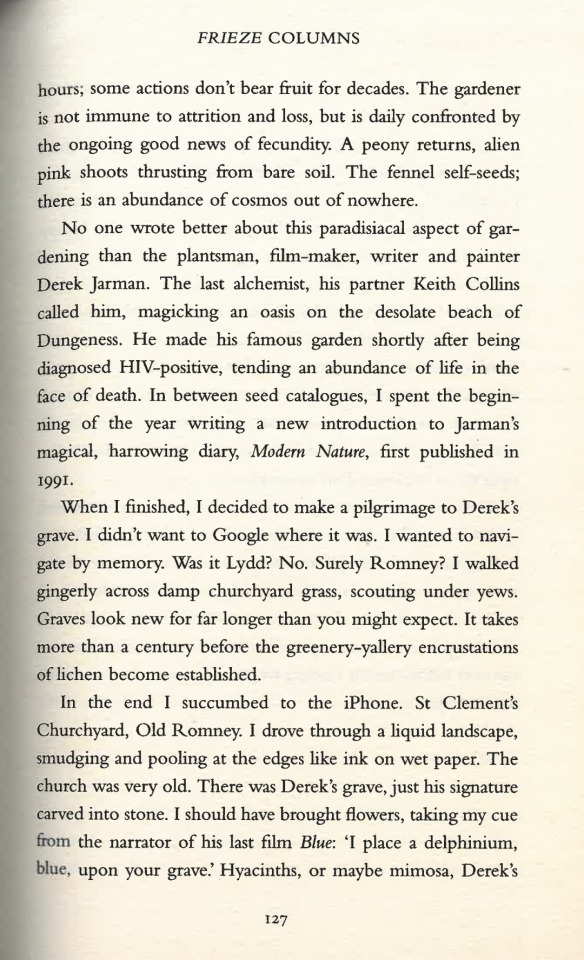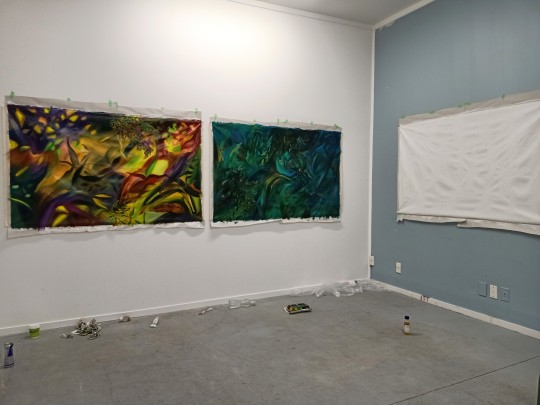Text
Rewilding the Garden - catalogue essay
Link to PDF via google drive
0 notes
Text
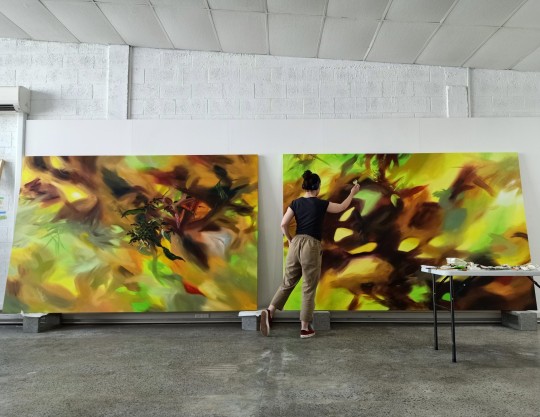
DEMO residency.


I have collected my stretched canvases and can now begin the final layers
It is a balance between putting detail and careful paint application, and allowing spontaneity as well as gesture to lead the painting. Particularly with the thick top marks, a freshness and confidence is key so it is important to not overwork it.
Same with the colour: I am balancing the muted tones with saturated greens and yellows. Same with light and dark.
I'm also trying to give each painting it's own life, while allowing the two to harmonize and read almost like one painting. Not a diptych, but a sense of continuation.
1 note
·
View note
Text
Studio considerations
Reflecting on September seminar critiques and other contextual developments, I am beginning to work on my final paintings toward end of year.
There were a few practical decisions for this work. I had to decide which elements of the canvas to do myself, and which to outsource: priming, cutting wood for bars, assembling bars, stretching the canvas, or a combination of these things.
Within the scale I wanted, I was losing hope on affording two canvases in any capacity, especially as I realised how difficult it would be to stretch myself, but thank goodness I have sorted getting them made.
With the canvas juust fitting in my studio, I'm going to paint the first thin layers, then roll off and deliver to canvas guy in two weeks, which I will then pick up stretched two weeks after that, which I am timing to deliver straight to DEMO (in my friend's large van) so that I can spread them out and paint the finishing touches properly.
These two paintings will be installed on the symmetrical walls, and I'm hoping to make a third for the opposing wall but I'm going to decide closer to the day.
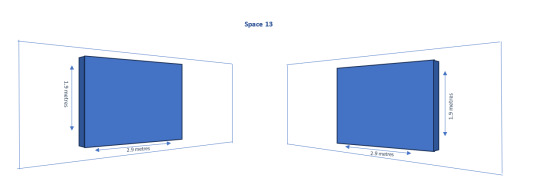
Opposite wall:

Painting-wise, the key things that came up in my September crits that I am keeping in mind are:
The saturated colour palette would work stronger with lesser distribution. It was a bit over-done in these works.
Particularly the neon yellows and greens have a chemical appeal to them, which creates an interesting balance within the work but needs to be done carefully. Purples maybe not so successful - makes it too tropical
The large unfinished work had success because of the freshness/spontaneity; the smaller paintings are over-worked such as moments of over-blending.
Similarly, I need to 'stop' more and give the painting moments to breath, where the viewer can enter the work easier and have more depth to the layering rather than all-over
Brown tones are a great way to 'ground' the work to Aotearoa. The uku/whenua association works well, and it steps outside of the obvious 'green' mode than may automatically represent this. Specific different tones of brown work well, with purple red undertones or visible other colours that are just a step away from being muddy.
I need to be careful about repetitive gestures, try changing my approach to the brushmark to better capture specific foliage, particularly with the thick areas.
I'm considering this feedback in my new paintings, I'm starting on the smaller pieces of canvas before beginning the large ones.

0 notes
Text
Planning toward end of year

I made a calender dating between now and hand-in (November 21st)
Some things listed include:
- Sourcing large scale stretcher bars and getting the canvases prepped and made
- Writing essay and publishing catalogue
-Artist statement 3x drafts with Glen
-Titles (and overall project title)
-Organising painting transport
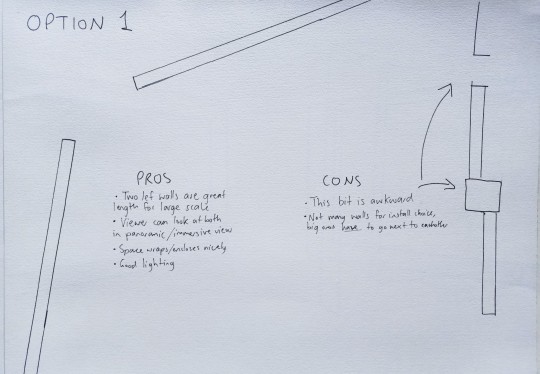
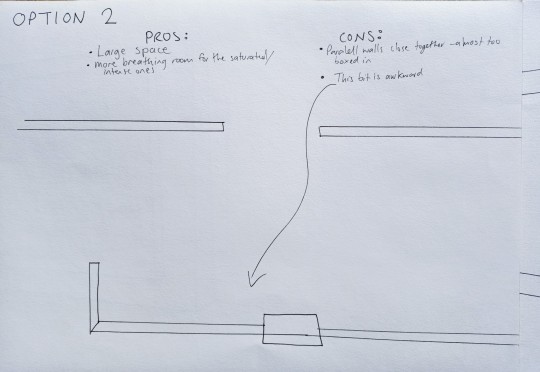
I decided between two exhibition spaces, I chose option 1 because I will possibly just install two large paintings and the angled walls will work great
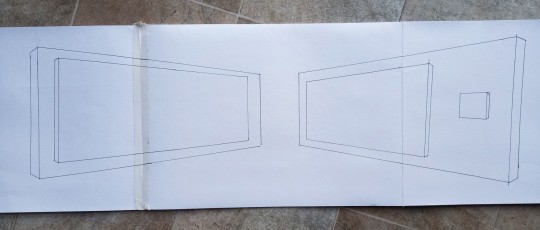
The paintings themselves need to be confident, and comprise of all the ideas from my MFA while considering specific feedback from recent crits. I will specify this in another post

0 notes
Text
September seminar
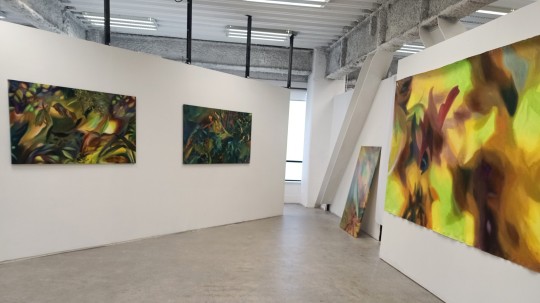




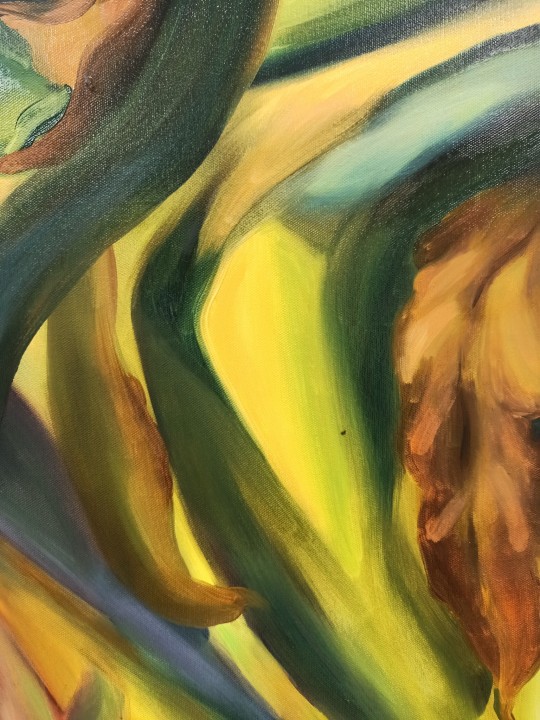

Artist Statment:
A painter divides space, arranges or mixes colour, and tends the paint upon a canvas, gardening an artwork toward completion. Through my paintings, in which at times I depict natural features of physical botanicas, or sometimes I allow the boundless imagined interpretations of ‘garden’ to lead, the aim is to reconsider gardens within contemporary Aotearoa within a layered context of art and social histories.
Historically, gardens have been a subject for women to paint as a safe, leisurely activity. Whilst many established women in the field depicted strong modernist approaches to the subject such as Rita Angus and Frances Hodgkins, there are layers of social repression that restricted women to such domestic settings. Painting this subject in contemporary Aotearoa has allowed me to expand what ‘garden’ can mean outside of the hierarchies both within the art world and the garden environment.
I aim to consider how a garden can be both its own entity within physical landscape, and an intangible idea led by imagination. Victorian influence of geometric layouts and exotic plants lead to some gardens representing the grandeur of its occupant. At other times, wild foliage and native greenery coexist with a curation, blurring together this ‘gardenesque’ organization with nature itself. It is in these moments that it can be questioned what ‘garden’ means.
Personal heritage also informs my work, in which my mother and late grandmother are passionate gardeners who have owned bromeliad nurseries, providing insight to bromeliads as an exotic symbol within Aotearoa’s garden history since their first introduction in the 1960s. I have whakapapa to Ngāpuhi, and my tupuna/ancestor Moegnaherehere signed Te Tiriti o Waitangi. I am particularly interested in how these two elements of my heritage may contrast, and how by painting endemic foliage alongside imported plants, this may speak to colonisation and the coexistence of different cultures within Aotearoa and its gardens. The resulting environments may appear familiar to here, but at times blur to unfamiliar or intangible new places – this is to reconsider the hierarchies between bush or wilderness, and the garden or domestically controlled.
[PAINTINGS UNFINISHED]
[left] Noble Groves Oil on canvas, 1450mm x 850mm
[right] Boundary of Entanglement Oil on canvas, 1450mm x 850mm
0 notes
Text
New large painting (and some technical mistakes I'm working through🎨)
The last couple of weeks I have begun working on another large scale painting. It's approximately 4 metres x 1.5
I have primed the raw canvas with 4 layers of gesso myself, as I've found it more cost effective.
The problem, however, is that I primed it on the floor of my studio.
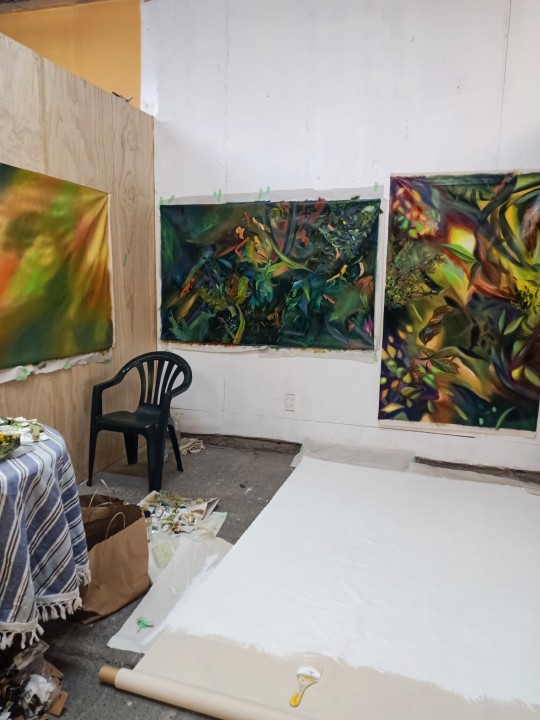
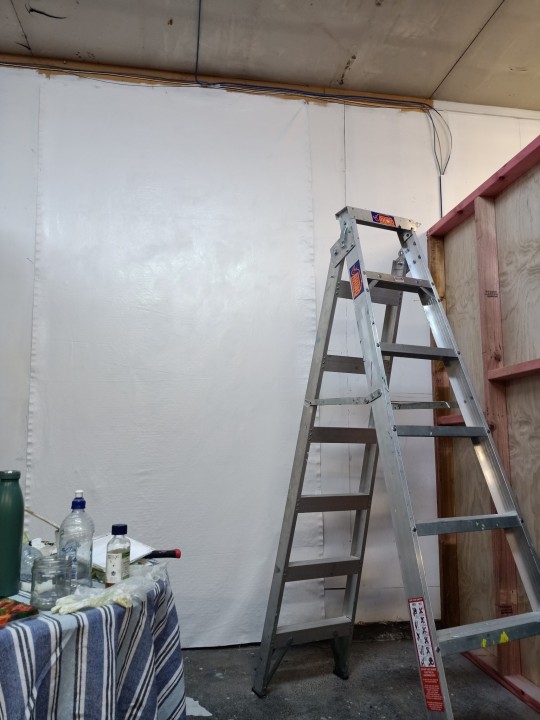
What I didn't realise, is that the texture from the jagged concrete was picked up through the priming process (not as thick paint to be sanded, but as physical dents)
Once I moved the primed canvas onto the wall, and painted the first layer of oils, I instantly realised my mistake as it was horribly textured to paint on and looked terrible

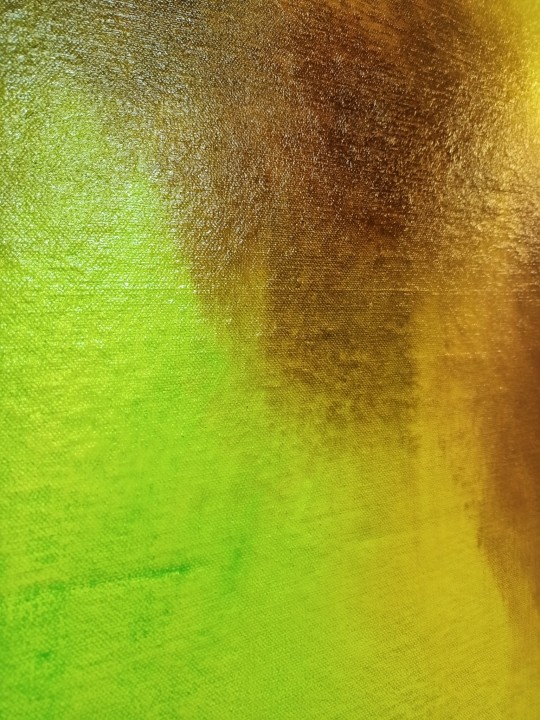
(these photos don't really show the texture well but it was bad!)
I was panicked at the cost and time wastage, but my supervisor Sara came to the rescue with her suggestion that I flip the painting around and wet the back of the canvas. This would shrink the fabric and hopefully restore a flat surface. The fast drying oil medium made it safe for me to manoeuvre it to do so.


I did this, crossed my fingers, and thank GOODNESS it seems to have undone most of the bumpiness. I have begun a new layer of paint and it is blending 100x better.
Phew!
0 notes
Text
Artist talk
Andrew McLeod responds to Susan Te Kahurangi King
Te Uru Contemporary
Saturday 26/8/23
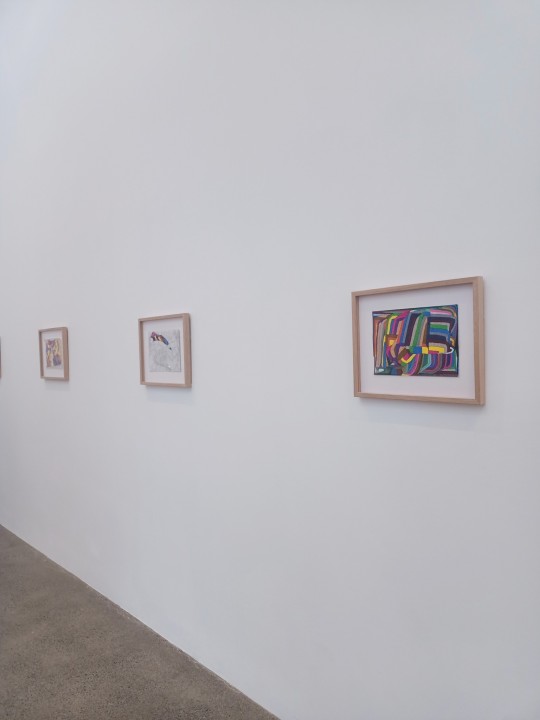
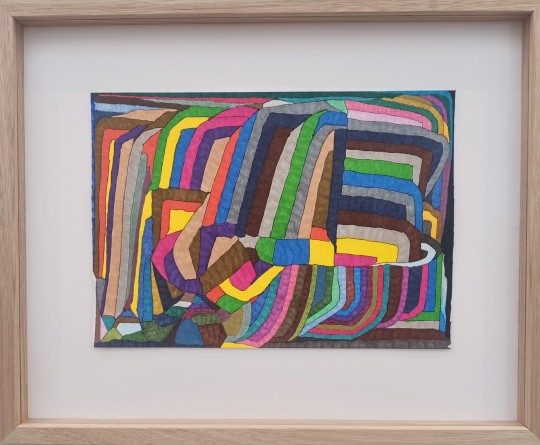
Susan Te Kahurangi King's drawings showcase extreme intricacy. Most pieces in this show are small, less than 400mm, as are most of King's extensive archive of several thousand drawings. The modest size holds the space strongly, because the compositional and technical complexity of the works provides plenty to look at within the frame. The scale is sometimes chosen functionally - particularly with King's earlier school age drawings, where the marks are built up on scraps of school paper or the back of some card. Many children or teenagers find themselves sketching in a similar fashion - and it is lucky King's grandmother carefully held these works, because she was creating something beyond her years even at the age of 14. An innocent, creative spontaneity is evident throughout this earlier work, as is in many children's art, where the imagination is more unbound than in adulthood. Contrasting to the 'child-like' descriptors, is an exquisite complexity which sees layers upon layers of minute and careful mark making, and deliberate calculated composition.
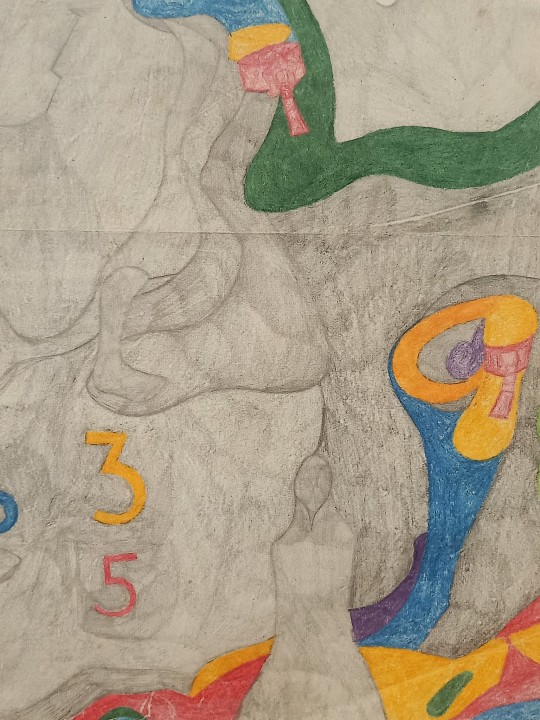
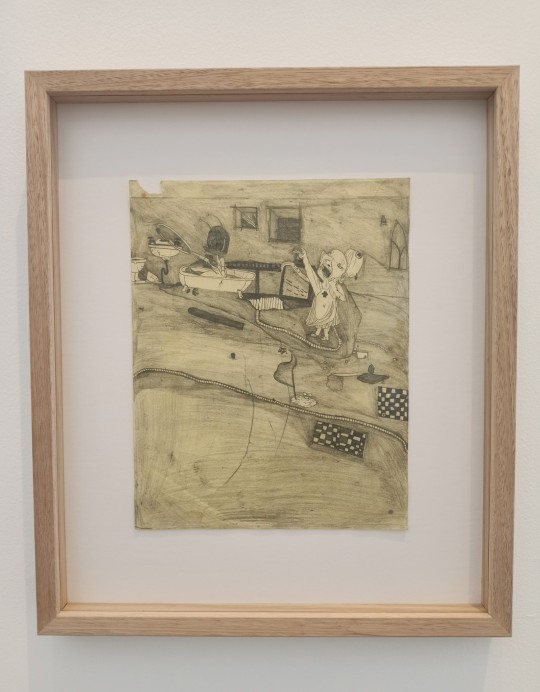
This imaginative surrealism continued toward King's current work now, which is exhibited in this Untitled show alongside earlier work from the 1960s and 1970s. McLeod discusses the obvious hierarchies that surround King's practice, and the amazement at her prolific status as an artist, in which her work could be akin to Willem De Kooning and other significant 20th century painters. Susan is autistic, and non-verbal, which often placers her in an 'outsider artist' category. Whilst her autism is an important part of her, in which it has allowed a gifted insight to see the world and more importantly communicate about the world in such a profound way through art, there is certainly an unintended or pervasive hierarchy that is implemented in an art gallery context, particularly when considering the gendered inequality too, making Susan Te Kahurangi a significantly important artist who contributes to breaking down these barriers.
I was extremely lucky to meet Susan, as well as her sisters Petita and Wendy, in 2019 during my last year of undergrad, in which I was able to look through the archive of literally thousands of phenomenal drawings. My work was specifically looking at art world hierarchies, and honouring the women before me who have painted in Aotearoa to build the context of today. I was embroidering at the time, and I particularly was drawn to the textile relationship within King's work, and I translated part of her work through stitching alongside other appropriated paintings.

Meeting Susan Te Kahurangi King at her home in 2019


King's drawing [left] detail of my 2019 embroidery [right]
This Te Uru exhibition displayed drawings of significant complexity, and it is a helpful body of work to view when considering use of colour, spacial treatment/composition, and balance between depiction and abstraction. King offers a vast range of artworks that restructure material value in terms of painting and craft, and showcases a linked unison as an exhibition whilst each piece confidently holds space as it's own new world.
0 notes
Text


Colour palette and glazing
In previous paintings, I have started with a 'garden' / 'Aotearoa bush' colour palette and added vibrant, exotic or saturated colours on top.
In these new paintings, I am instead layering saturated colours first, and then pulling back the tones through glazing, leaving small moments of strong colour.
It is difficult to adjust to this process, because the first couple of layers are so exaggeratedly saturated that it's hard to trust that it's not the final palette - but that's mostly because it's something I'm not used to.
These two paintings have now been painted into several layers, and I believe the new process is accomplishing what I wanted it to - the base bright colours subtlety push through, with moments of brightness shining stronger than before.
Since this is a new method of painting, something that I'm loving is to be learning a new skill, by flipping the process that was so ingrained in me. I think the risk/change has paid off, because new things are happening in the painting that wasn't before.
This may seem like an over-reaction to such a simple part of the painting process, but it has been a big breakthrough for me because of how significant colour is within my paintings.
Another thing I am doing that is relatively new, is glazing. Just like with the colour palette, my physical approach to painting had been quite methodical, or habitual, in the way that I put down the layers.
Whilst much of the painting is still done in my usual approach, I have made certain sections glazed in which I wanted stronger contrast or added depth/realism. This is done using a medium and very thin washes - each time a layer dries, I add another layer, until slowly the effect builds up into a refined section. It certainly has a smoothness and starkness that I had not achieved before through thick blending.
I think both of these techniques are most effective in conjunction with the other painting qualities I'm interested in - whether thick buttery brush marks or rough messy moments against softly blended areas.
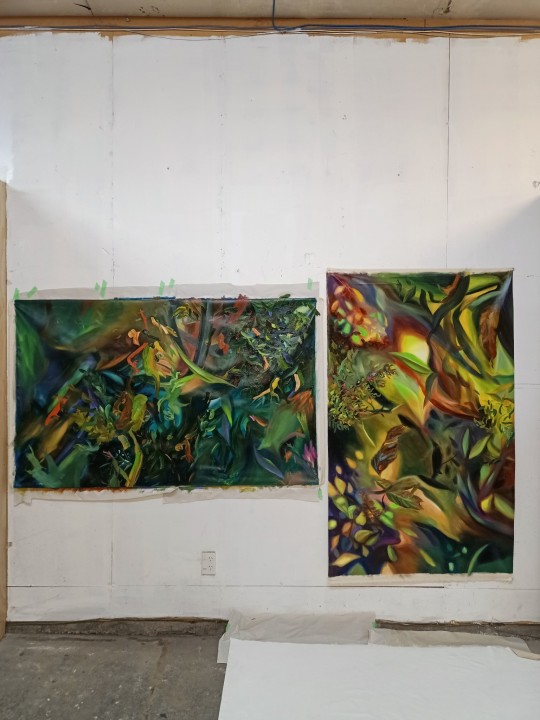
0 notes
Text
Studio thoughts

(paintings incomplete)
I have moved into a new studio, which is wonderfully spacious and accessible.
In the weeks since seminar, and for the next while, I am completely focused on creating paintings that develop the points brought up at mid-year.
A key piece of advice from the assessment panel is to put context to the side for a bit, and really focus on the painting. Trust that the research and context will come into the painting naturally, so rather than compositionally focusing on botanics and specific imagery, I need to experiment with the paintwork itself.
A few explorations in these two paintings include:
- glazing as a process; I normally build oils in thick layers and so I am interested in what might happen if I use glazing methods to instead build up some areas in thin washes.
- following the assessors' advice, I've invested in some high quality paints; I bought several Schminck Norma large paints and it is SO much better especially in saturated areas, which leads to the next point
-colour: I am experimenting much more with colour in terms of saturation/contrast, and combining naturalistic greenery with surreal pigments of purples and oranges. Blending techniques also push this saturation to appear glowy in some areas, or graphic in others.
Whether or not these exact paintings are successful, this process has opened up some helpful learnings around oil paint, and it is helping me decide exactly what I want to communicate through different painting techniques leading towards end of year.
0 notes
Text


Artist Talk: Maungarongo Te Kawa
Hikihiki: Stories The Uplift
Season Gallery , Saturday 22nd July
Ron Te Kawa begins his talk describing the show's title, 'Hikihiki' which he explains as the eveloping of a hug, like the warmth of a blanket reflected in his vibrant quilts. This embrace can be felt when viewing the works, and such tenderness is evident not only in the visually striking colours and soft fabrics, but in the laborious sewing process evident in the stitching.
Te Kawa recieves guidance and conceptual interest in Hineteiwaiwa, goddess of whare pora (weaving), textile arts, as well as midwifery/childbirth. Te marama, the moon, also informs his art-making.
Within the softness of these quilts, there is pōuri, or sadness, of the societal rejection and intergenerational trauma of Maori, as well as isolation within a digital world as mentioned in the exhibition text. Te Kawa uses storytelling and craft to find brightness of Maori - giving unapologetic celebration of whakapapa, and 'poking [his] tongue out at the expectations of others'


0 notes
Text
Mid-year installation
July 2023

[Panorama installation view]

Invasions, Exotics and the Homegrown
Oil on unstretched canvas
1600 x 4500 mm
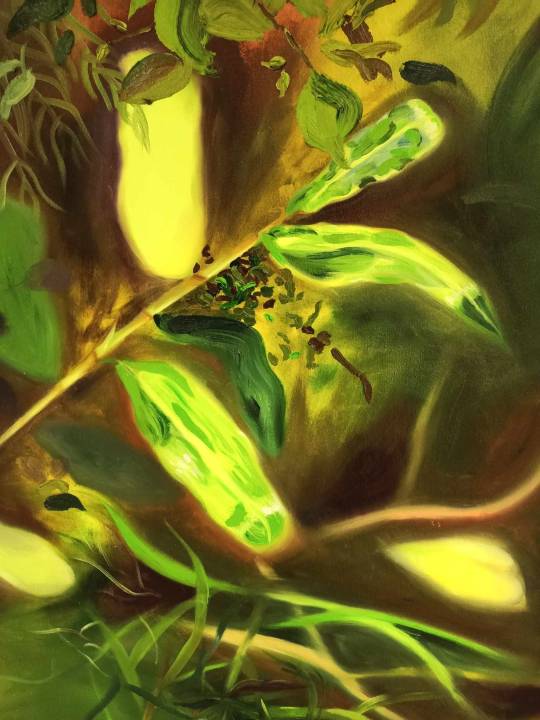


[close up]

25 Hours in the Garden
Watercolour ink and gauche on paper
1500 x 4500 mm

[close up]
Artist statement:
A careful arrangement of exotic plants halts abruptly at a garden boundary, framed by wild bush that is unconfined by such control. In this instance, a garden serves as a domestic landscape, decoratively framing a home as an extension of the interior’s design. Verdant weeds are unceremoniously plucked or occasionally integrated, either through idle abandonment or passive acceptance, amidst a battle between foliage and gardener for control of the terrain.
Neo-colonial symbolism pervades some gardens, succeeding historical use of geometric layouts and exotic plants representing the grandeur of its occupant. At other times, wild foliage and native greenery coexist with a curation, blurring together this ‘gardenesque’ organization with nature itself. It is in these moments that it can be questioned what ‘garden’ means. It can be turned inward to an 'internal garden' (Jardin intérieur) within the mind of an artist, as referred to by Marcel Proust. An internal garden can be tended and nourished, with thoughts and feelings planted, weeded out or watered, whilst aware of a garden’s impermanence.
A painter, too, divides space, arranges or mixes colour, and tends the paint upon a canvas, gardening an artwork toward completion. By suggesting these ideas through paint, I aim to consider how a garden can be both its own entity within physical landscape, and an intangible idea led by imagination.
0 notes
Text
Gustav Klimt's Garden Paintings


How have gardens been presented in paintings throughout art history, and what context does this frame for the subject today? I am curious in the nuances of the term 'garden' and how artists may interpret this broad context across different time periods and cultures.
Austrian artist Gustav Klimt is known to adorn his paintings with gold leaf, but his array of garden studies are mostly painted without that embellishment. I point this out because I wonder if the detailed, sometimes pattern-like floral landscapes instead showcase the garden itself as the 'gold', embracing its decorative nature as seen in the Art Nouveau period at the time.
Where gardens can sometimes be an environment of cultivation in unison with nature, Klimt portrays gardens as decorative embellishment. Symbolism could be found here, for example in Cottage Garden with Cross in which the overgrowth of florals adorns religious imagery of Mary and Jesus, bringing a spirituality to the garden environment. Several of Klimt's garden paintings were painted during world war one, and this context could places his florals as symbols of pacifism and sorrow, much like how Aotearoa artist Rita Angus depicted nature as a parallel to pacifism.
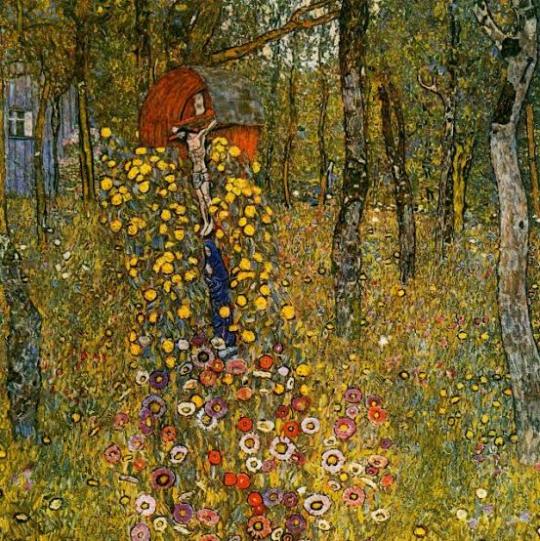
Gustav Klimt, Cottage Garden with Cross, 1911. Oil on canvas.
The decorative approach to garden painting portrays an aliveness. Repetitive mark-making and impressionist qualities feature in 'Garden Path with Chicken' which mixes an amass of colour into a field of abstraction pulled together by compositional cues such as the path, and figuration of chickens and carefully rendered moments amongst the florals and plants.

Gustav Klimt, Garden Path with Chickens, 1916. Oil on canvas.
Several of Klimt's paintings feature the garden as the canvas' entirety, placing the viewer above the ground to view a depiction grounded in real garden foundations, but with a painting language that detaches from reality.
A comparison can be made to contemporary Aotearoa artist Karl Maughan, whose saturated palette presents an idealised landscape borrowing conventions of both painting and garden histories.

Karl Mughan, Taonui Road, 2017. Oil on canvas, 1720 x 2430mm
1 note
·
View note
Text
Trip to Wellington
3rd - 6th June
In Wellington, I had the opportunity to meet with curator of modern art at Te Papa, Lizzie Bisley. She showed me a selection of Rita Angus' watercolours that focus on botanic and gardens. This was an incredibly wonderful opportunity to view a significant part of garden painting history of Aotearoa, and see Angus' intricate process up close.

For copyright reasons, I will not post photographs of this work, however I took images that I am able to use as personal reference.
Several unfinished sketches were shown, which displayed looser mark-making than her typically immaculately controlled brushwork. Some sketches showed singular botanical objects, appearing as a form of documentation isolated on the page. This included shells, flowers and broader landscapes.
Before viewing, I felt familiar with Angus' masterful approach for water colour, however seeing these pieces up close without glass truly allowed insight to just how beautifully she used the paint.
Whilst some works leaned into the wet flow of the watercolours, others were so controlled that they seemed like fine oil painting even up close.
While in Wellington, I also viewed the Matou collective installation at Te Papa, as well as Reuben Paterson's exhibition at City gallery and the Kingi Tuheitia portrait awards at the Portrait Gallery.
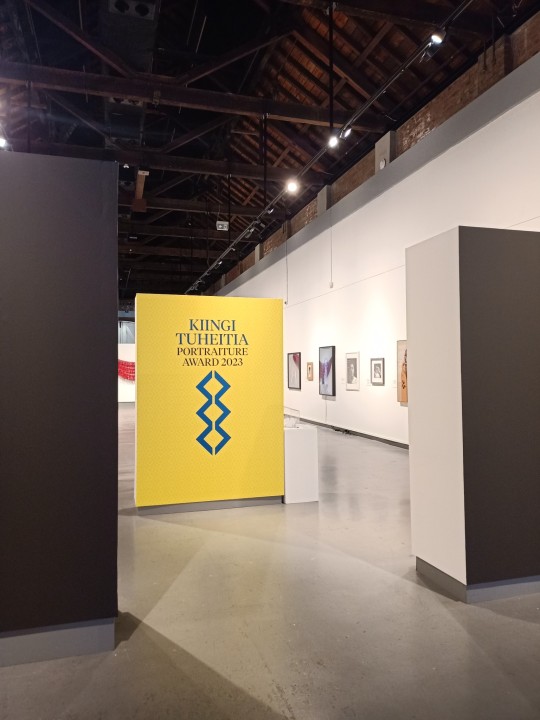


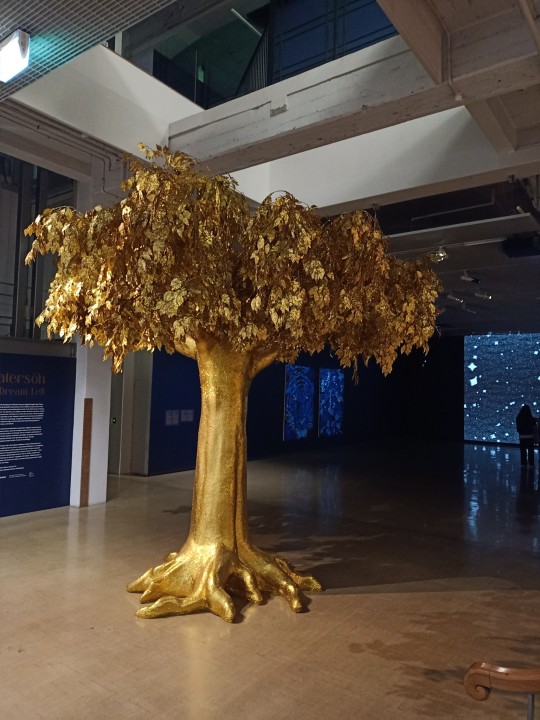





0 notes
Text
Preparing a large scale oil
I am creating a large scale oil painting at 4 metres by 1.2; the same size as my plein air watercolour.
I am using raw canvas, which needs preparation for the oil using gesso and GAC. The preparation process will likely take longer than the painting itself, but is a crucial component.
I am painting two layers of GAC, which seals the fabric and starts building a paintable surface. I am then following with at least two layers of bright white primer.
For my end of year piece, which will likely be large scale, I will spend even longer on this preparation process and do up to 10 layers of undercoats.
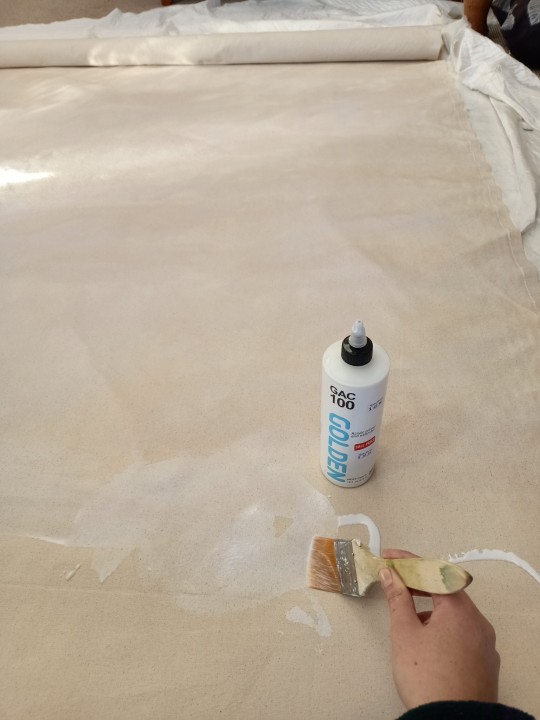
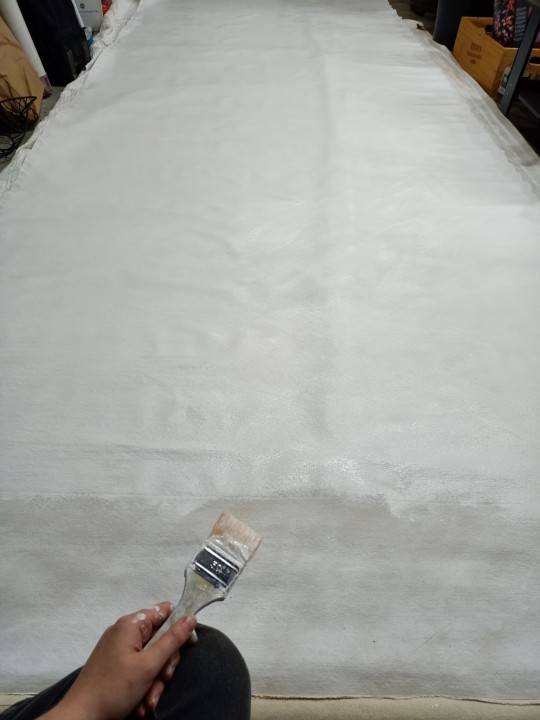
0 notes

